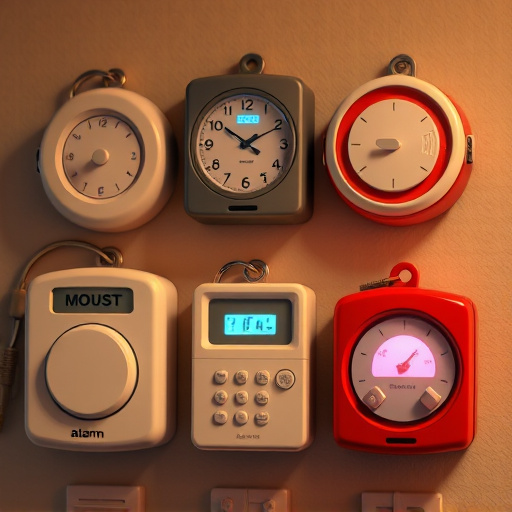Portable panic buttons, recommended by police, are compact personal safety devices that emit loud alarms for immediate assistance in emergencies. Easy to carry and access, they deter attackers, attract attention, and send signals to monitoring services for swift response. These devices offer peace of mind in various settings, with features like GPS tracking, automatic fall detection, and long-lasting batteries. Selecting a police-recommended personal safety alarm with integrated monitoring services ensures 24/7 assistance, beneficial for vulnerable individuals and those traveling alone or in unfamiliar locations.
“In today’s world, personal safety is paramount. Understanding portable panic buttons and their monitoring services can provide an essential layer of protection. This article delves into the functionality of these devices, highlighting how they work and their role in emergency situations. We explore the police recommendations for personal safety alarms and dissect key features to consider when choosing a panic button. Furthermore, we discuss the benefits and diverse use cases of implementing monitored panic button systems.”
- Understanding Portable Panic Buttons: A Personal Safety Device
- The Role of Monitoring Services in Panic Button Systems
- Police Recommendations for Personal Safety Alarms
- Key Features to Consider in a Portable Panic Button
- Benefits and Use Cases of Implementing a Monitored Panic Button System
Understanding Portable Panic Buttons: A Personal Safety Device
Portable panic buttons are compact, personal safety devices designed to offer immediate assistance in emergency situations. These buttons, often recommended by police for individual safety, work by emitting a loud alarm signal when activated, attracting attention and potentially deterring attackers. They provide users with a sense of security and empowerment, especially in public spaces or while traveling alone.
The devices are typically easy to carry, either attached to keys, worn as a pendant, or fitted into bags or pockets, ensuring they are readily accessible during emergencies. When activated, the panic button sends a signal to a monitoring service that promptly alerts emergency responders, providing vital time for assistance to arrive. This simple yet effective technology offers peace of mind, knowing that help is just a press away.
The Role of Monitoring Services in Panic Button Systems
Police Recommendations for Personal Safety Alarms
In recent years, personal safety alarms have gained significant traction as a crucial tool for individuals seeking peace of mind while going about their daily lives. The police have played a pivotal role in recommending and promoting these devices as an effective means of self-protection. Police-recommended personal safety alarms are designed to be compact, portable, and easy to use, enabling users to quickly trigger an alert in case of emergencies. These devices often incorporate advanced features such as GPS tracking, automatic fall detection, and long-lasting batteries, ensuring users can rely on them when it matters most.
When choosing a personal safety alarm, it’s essential to consider factors like range, connectivity (e.g., cellular or GPS), and integration with monitoring services. The police recommend devices that offer immediate assistance by connecting users to emergency services or loved ones through direct call or text features. With the rise of remote monitoring, many modern alarms provide real-time alerts to monitoring centers, allowing for swift response times. This integration not only offers added security but also provides an extra layer of peace of mind, especially when traveling alone or in unfamiliar areas.
Key Features to Consider in a Portable Panic Button
When choosing a portable panic button with monitoring service, several key features stand out as essential for personal safety. Firstly, look for devices that offer GPS tracking. This feature allows emergency services to quickly pinpoint your location in case of an incident, ensuring swift response times. Additionally, consider models equipped with automatic fall detection technology. These alarms can recognize and respond to sudden falls, which is particularly important for elderly users or those with mobility issues.
Another vital aspect is easy activation and a long-lasting battery life. The button should be easily accessible and designed to be pressed quickly in distress situations. Moreover, opt for devices that integrate with monitoring services, as these provide real-time assistance and peace of mind. Police-recommended personal safety alarms often come with these features, making them reliable tools for maintaining safety while on the go or at home.
Benefits and Use Cases of Implementing a Monitored Panic Button System
Implementing a monitored panic button system offers significant advantages for personal safety, especially in situations where immediate assistance is crucial. These portable devices are designed to provide peace of mind by allowing users to quickly signal for help when facing emergencies, such as assaults, domestic disputes, or getting lost. The key benefit lies in the 24/7 monitoring service; trained operators receive alerts and can dispatch emergency services directly from the device, ensuring a swift response.
Use cases span across various scenarios. For individuals living alone or those with medical conditions, it offers vital support. Students on campus or people at remote locations can use these alarms as an extra layer of protection. Even in public spaces, panic buttons enable bystanders to alert authorities quickly during emergencies, fostering a safer environment. Many police departments recommend personal safety alarms with monitoring services as a proactive measure against crimes and accidents.
Portable panic buttons equipped with monitoring services offer a powerful solution for personal safety, especially in situations where immediate assistance is needed. By integrating these devices with professional monitoring, individuals can gain peace of mind knowing that help is just a press away. As police departments increasingly recommend personal safety alarms, the adoption of monitored panic button systems becomes a viable option to enhance security and well-being, particularly for those who frequent isolated areas or have specific safety concerns.
